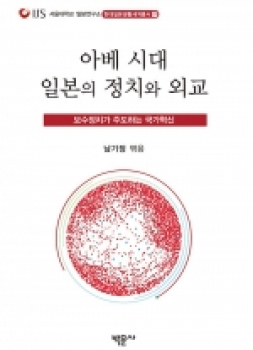
| Author | Nam, Ki Jeong ed. | Date | 2022-05-27 |
|---|
Characteristics and Limitations of Conservative-led Innovation in the Abe Era ... Nam Gi-jeong
The LDP and Policy Process in the Abe Era
I. Strategies for Rebuilding the Dominance of the LDP in the Abe Era: Historical Development and Sustainability … Park Chul-hee
1. The revival of the supremacy of the LDP
2. Perspectives on the Liberal Democratic Party's Dominance System
3. The Liberal Democratic Party’s Dominance System, which experienced agitation and confusion: 1990s and 2000s
4. Strategies for Reconstruction of the LDP in the Abe Era
5. Prospects of the LDP Dominance System
II. The Decline of Japanese Agricultural Profit-Inducing Politics: Abe Administration, LDP Agricultural and Forestry People, Agricultural Reform … Lee Jeong-hwan
1. Relations between the Agricultural Cooperatives and the LDP during the Abe period
2. Contents of Agricultural Reform under the Abe Administration
3. TPP and Abe's Agricultural Policy Line
4. Political Process of Agricultural Cooperative Reform
5. The interests and discourse of the LDP’s agricultural and forestry groups
6. Prospects of Agricultural Profit-Inducing Politics
Ⅲ. Welfare and Defense of Japan in the Age of Low Birth and Aging Population: The Political Economy of ‘Cannon and Butter’… Nam Gi-jeong
1. The Population Problem: The Hidden Picture of Security Theory in the Abe Era
2. The ‘cannon and butter’ debate
3. Japan's demographics and the reality of social security and defense capabilities
4. Correlation between social security benefits and defense-related expenses
5. Population and Security: Implications for East Asia
Foreign Policy in the Abe Era
IV. The Abe Administration’s U.S.-Japan Alliance Policy and Global Diplomacy: Between “International Cooperationism” and “Strategic Autonomy” … Park Young-jun
1. Strengthening alliances and issues of autonomy
2. The Abe Administration’s “International Cooperationism” and “Strategic Autonomy”
3. Development of “active pacifism based on international cooperation”
4. Visualization of “strategic autonomy”
5. Implications of Japanese Diplomacy to Korea
Ⅴ. Korea-Japan Relations Surrounding China: Japan's Public Perceptions and Policies in Korea and the Korean Peninsula … Kimiya Tadashi
1. The emergence of the Chinese factor in Korea-Japan relations
2. Review of previous research
3. Japan's China Policy and Korean Peninsula Policy
4. Comparison between Korea's China Policy and Japan's Policy
5. Limitations and Possibilities of Korea-Japan Relations
6. China's Great Power and Prospects for Korea-Japan Relations
Civil Society and Movements in the Abe Era
Ⅵ. Japanese Public Opinion and Foreign/Security Policy During the Abe Administration: An Empirical Analysis of the Right-Wing Discourse of Japanese Civil Society … Kyunghee Kim
1. Meaning of polls
2. Public Opinion and Foreign/Security Policy: Review of Theory and Prior Research
3. Japan's Citizen Opinion and Foreign and Security Policy
4. Evaluation of Abe Diplomacy through Public Opinion
VII. The process and nature of the ‘All Okinawa’ anti-base movement: From anti-war pacifism to self-determination movement… Jin Pil-soo
1. The emergence of the “All Okinawa” movement
2. Leadership of Governor Onaga and organization of the “All Okinawa” movement
3. The ideology and goal of the ‘All Okinawa’ movement
4. Process and Prospects of the ‘All Okinawa’ Movement
5. Implications of the ‘All Okinawa’ movement